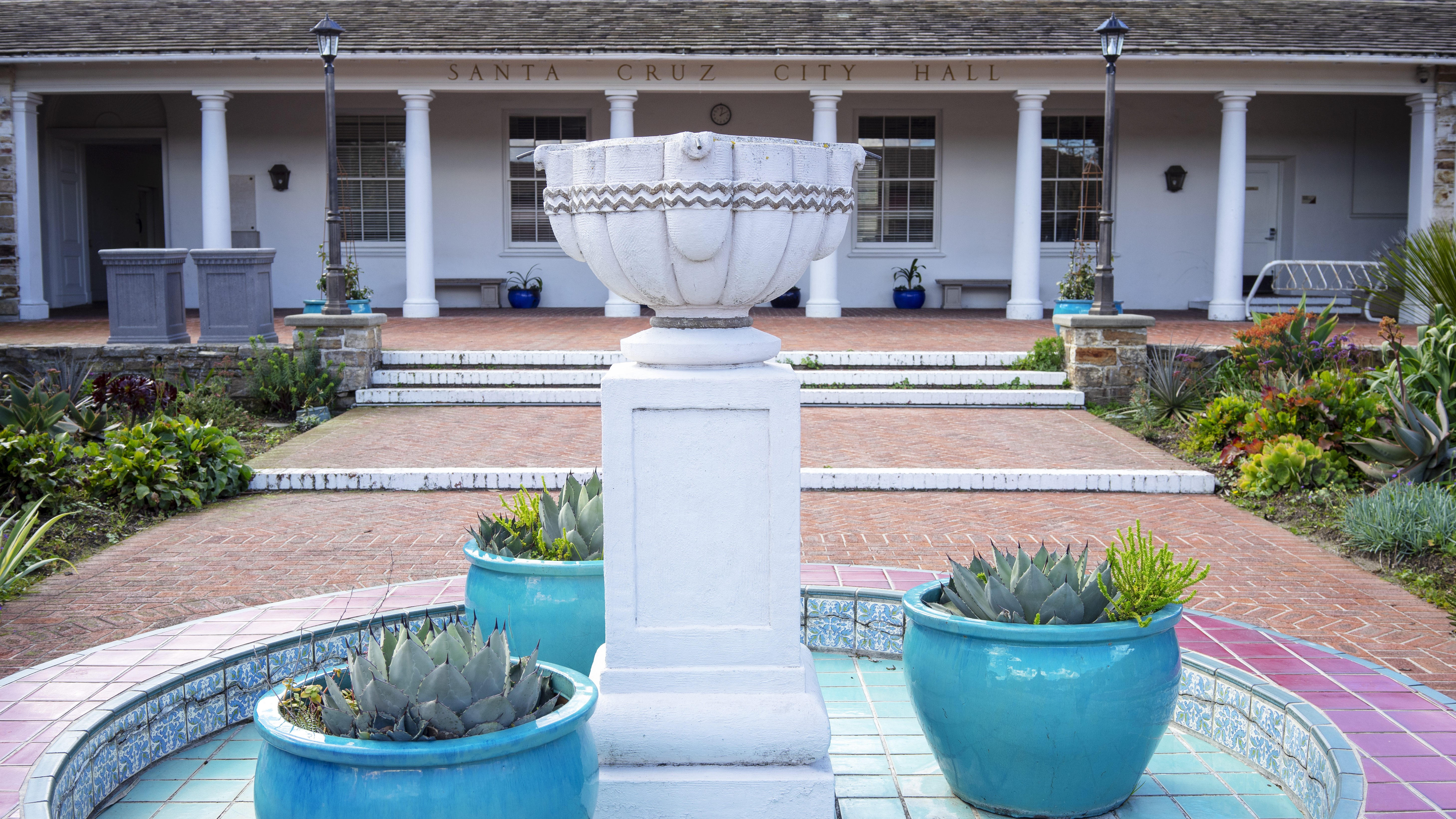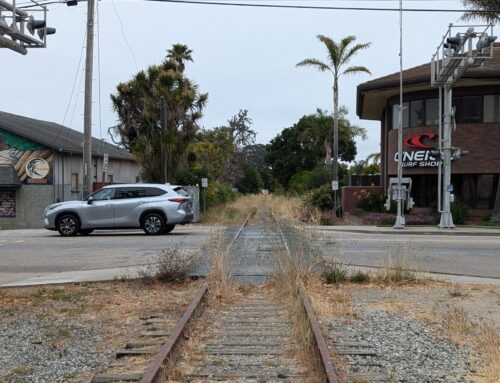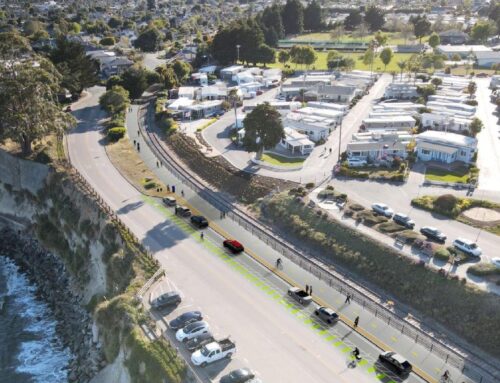
The Santa Cruz City Council on Tuesday advanced a plan to phase out natural gas in new and existing homes. (Kara Meyberg Guzman — Santa Cruz Local file)
SANTA CRUZ >> The Santa Cruz City Council on Tuesday advanced a plan to reduce the use of natural gas in homes and other buildings in favor of electricity as the sole energy source.
- The planned rules stem from the city’s Climate Action Plan 2030. The plan aims to reduce the city’s greenhouse gas emissions 40% from 1990 levels by 2030.
- A large part of that goal can be met by shifting more homes and buildings off of natural gas and on to electric appliances, said Tiffany Wise-West, the city’s sustainability and climate action manager.
- City leaders aim to have electricity as the sole energy source in 31% of existing residential buildings and 26% of existing commercial buildings by 2030.
Electric appliances are more efficient than those powered by natural gas, said Wise-West. Electric heat pumps are four times more efficient than natural gas for space heating, water heating and clothes drying, said Rupam Singla, a consultant with TRC Companies who is working with city staff. Heat pumps are electric units that essentially pump air indoors and outdoors to heat or cool a building.
Though California’s electric grid is supported in part by natural-gas power plants, an increasing amount of electricity is generated from renewable sources like solar and wind power.
Central Coast Community Energy expects to generate 60% of its energy from renewable sources by 2025. It expects to run completely on renewable energy by 2030. Central Coast Community Energy service began in 2018 to buy electric generation services. PG&E continues to be Santa Cruz County’s utility provider.
While some buildings’ electrical systems will need to be bolstered to support electric appliances, about 25% of homes and 50% of businesses in Santa Cruz are now capable of switching to heat pumps for air conditioning, Wise-West said. “It will cost about $310 million to electrify our entire building stock,” Wise-West said.
The state and Central Coast Community Energy offer rebates and financing to incentivize electric retrofits. But these incentives alone won’t electrify the city quickly enough to meet the city’s goal, said Wise-West. The city will also need to create local energy requirements that exceed state rules, called reach codes. City leaders have not decided what those reach codes will be, Wise-West said.
Based on codes adopted in other cities, Santa Cruz codes could include:
- Requirements that building owners report energy use and energy reductions over time.
- Requirements that renovation-permit applicants meet energy efficiency or electrification rules.
- Requirements that building sellers disclose whether the building meets local energy-efficiency or electrification policies.
The city’s policies are expected to include rules to ensure that renters aren’t forced out of their homes and that the cost of retrofitting does not cause sharp rent increases, said Singla.
Some of the possible equity measures include:
- Prioritizing electrification for affordable housing with already-planned renovations, to minimize the number of renters displaced by retrofits.
- Prohibiting evictions during electrification retrofitting.
- Requiring that the cost of electrification be passed on to renters over the life of the new appliances, rather than a large, immediate rent increase.
- Allowing residents and experts to weigh in on how the policies are implemented.
City staff and consultants will work during the next 10 months to build the electrification policy.
- In February and March, city leaders plan to hold community events and evaluate how to make electrification accessible in affordable housing.
- In May or June, the council will hold a study session on the electrification policy.
- From July to September, city staff will hold additional outreach events and bring the draft policy to council committees.
- In October, the policy is expected to be presented to the council for adoption.
Several residents said that many of the city’s buildings are not ready for electrification. Some said the city’s power grid must be strengthened to support electric buildings.
“They don’t have the substations, they don’t have the transmission lines,” said Westside resident Eric Crawford. “We are just not ready to do mass building electrification, and I really think this is putting the cart before the horse.”
The council voted 6-1 to accept the report. Vice Mayor Renee Golder voted no.
Water quality grant
Also Tuesday, the Santa Cruz City Council approved a $1 million grant application to the California State Water Resources Control Board to support efforts to improve the water quality of the San Lorenzo River.
The river has bacterial levels that exceed state limits and pose a danger to wildlife and drinking water supplies, according to a city staff report. Previous studies have found that bacteria comes from broken sewer lines, camps of unhoused people and poorly secured septic tanks outside of city limits, said Environmental Compliance Manager Akin Babatola.
The grant would fund pollution control devices at four points along the river. It also would fund education and outreach from the city’s Homelessness Response Outreach Team about river pollution and how to access bathrooms.
One resident said the grant-funded outreach and education would not address the root cause of the river pollution. He said money instead should be spent on installation of public restrooms and shelters away from the river.
Raise for city manager
The council approved a 5% merit raise for Santa Cruz City Manager Matt Huffaker. The raise increases his pay to $290,896 annually before taxes. His salary was $277,044 annually before taxes, according to a city staff document.
Several residents questioned the raise in light of the city’s recent labor negotiations with some of its lowest paid workers.
“With the same kind of recognition of the city manager’s value that you’re giving with this 5% increase, I hope you bring that same appreciation to the city workers and their value,” said Service Employees International Union Local 521 spokesman Liam McLaughlin.
Editor’s note: This story has been updated to clarify that the planned rules stem from the Climate Action Plan 2030. It corrects the council’s vote count and attribution of a statement about electric heat pumps. It also clarifies that Central Coast Community Energy expects to generate 60% of its energy from renewable sources by 2025.
Questions or comments? Email [email protected]. Santa Cruz Local is supported by members, major donors, sponsors and grants for the general support of our newsroom. Our news judgments are made independently and not on the basis of donor support. Learn more about Santa Cruz Local and how we are funded.
Jesse Kathan is a staff reporter for Santa Cruz Local through the California Local News Fellowship. They hold a master's degree in science communications from UC Santa Cruz.





